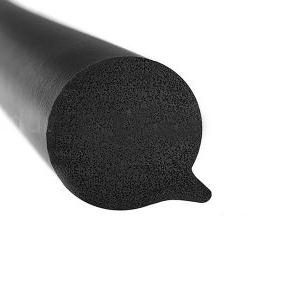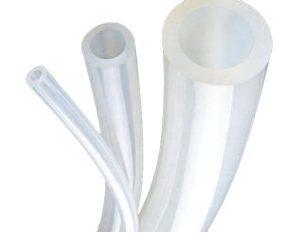Rubber cords are essential components in many industries, offering excellent sealing, cushioning, and vibration resistance. Their versatility makes them ideal for a wide range of environments, from automotive to aerospace. In this guide, we explore the definition, types, materials, applications, and key factors to help you choose the right rubber cord for your project.
🔍 What is a Rubber Cord?
A rubber cord is a cylindrical strip made from either solid or sponge rubber. It is designed to provide sealing, cushioning, and impact resistance between components. Rubber cords are typically extruded and available in solid, hollow, or co-extruded forms.
🔧 Types of Rubber Cord
1. Solid Rubber Cord
Used in sealing and pressure-resistance applications. Highly durable and flexible.

2. Sponge Rubber Cord
Lightweight, compressible, ideal for cushioning and insulation.

3. Hollow Rubber Cord
Reduces weight while maintaining flexibility; common in door/window sealing.

4. Co-extruded Rubber Cord
Combines two materials for dual performance (e.g., hard-soft combination).
🧪 Rubber Materials Used in Cords
- EPDM: UV & ozone resistant; HVAC, automotive.
- Silicone: High-temperature & medical-grade uses.
- Neoprene: Weather, oil & chemical resistant.
- Nitrile (NBR): Fuel & oil systems.
- Natural Rubber: Excellent elasticity; general sealing.
- TPR/TPV: Recyclable, flexible, good for consumer goods.
🏭 Common Industrial Applications
- ✅ Automotive – Engine bay sealing, fuel line support, door edge protection
- ✅ Construction – Window & door seals, vibration isolation pads
- ✅ Marine – Hatch gaskets, anti-collision buffers
- ✅ Medical – Prosthetics, tubing seals
- ✅ Electrical – Wire insulation, gasket barriers
- ✅ Aerospace – Window seals, fuel cell padding
🎯 How to Select the Right Rubber Cord
To ensure optimal performance and durability, selecting the right rubber cord requires careful evaluation of the following key factors:
- Working Temperature: Choose a material that can withstand the temperature range of your application without degrading or losing elasticity.
- Chemical Resistance: Make sure the rubber cord is compatible with any oils, fuels, or chemicals it may come into contact with.
- Compression Set Resistance: Evaluate whether the cord can return to its original shape after prolonged compression. This is essential in sealing applications.
- UV & Weather Resistance: If used outdoors, the cord should resist UV radiation, ozone, and harsh weather to prevent aging and cracking.
- Shore Hardness: The hardness level of the cord affects flexibility and sealing effectiveness. Choose the appropriate Shore A hardness based on the intended use.
🏁 Conclusion: Why Choose OKIN Rubber Cord?
At Okin, we manufacture high-quality rubber cords with advanced extrusion technologies, including solid, hollow, sponge, and co-extruded profiles. With over 21 extrusion lines and global clients across automotive, construction, and marine industries, we deliver tailored sealing solutions with consistent quality and competitive pricing.
📧 Contact us today. Let’s seal the future together.
